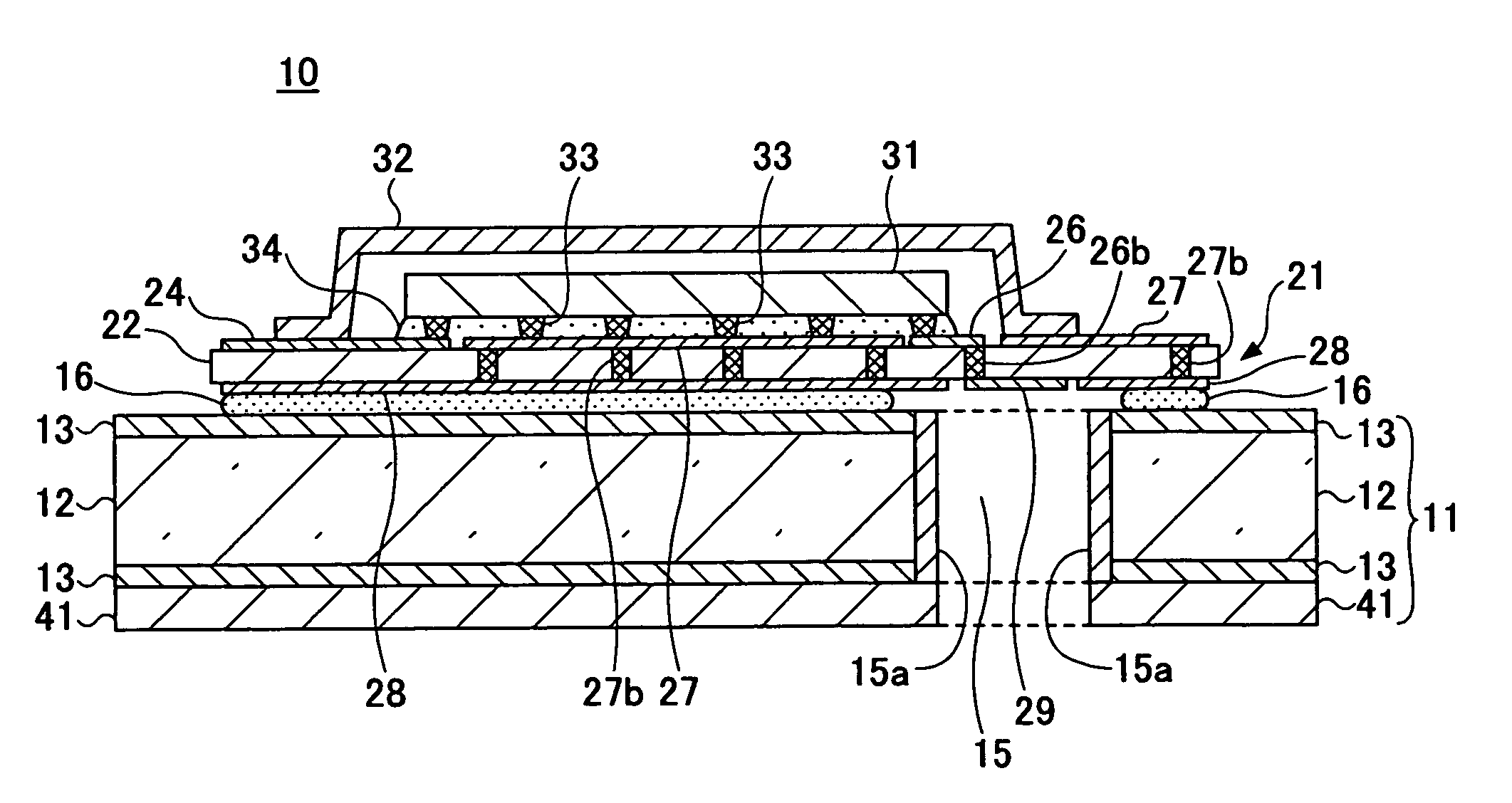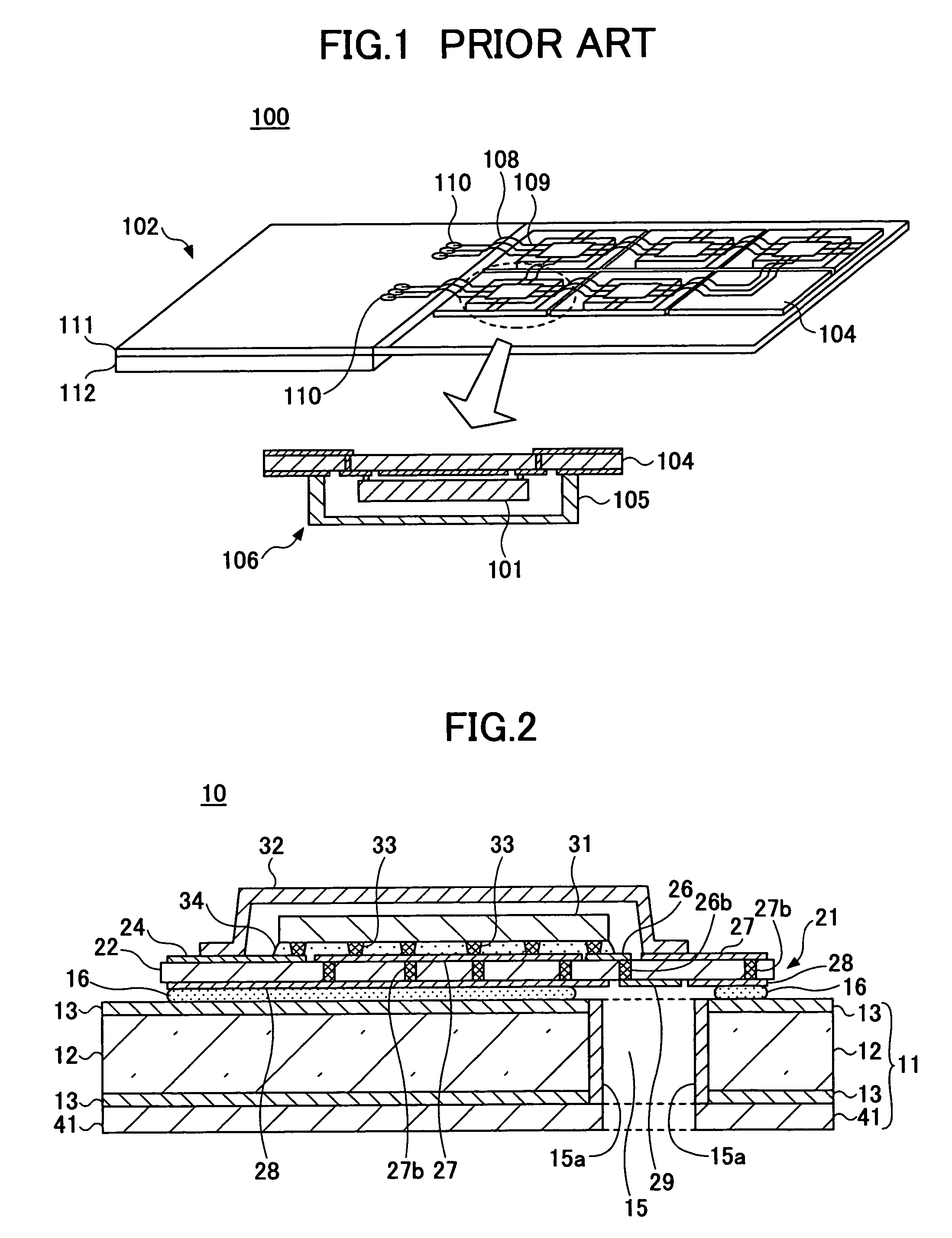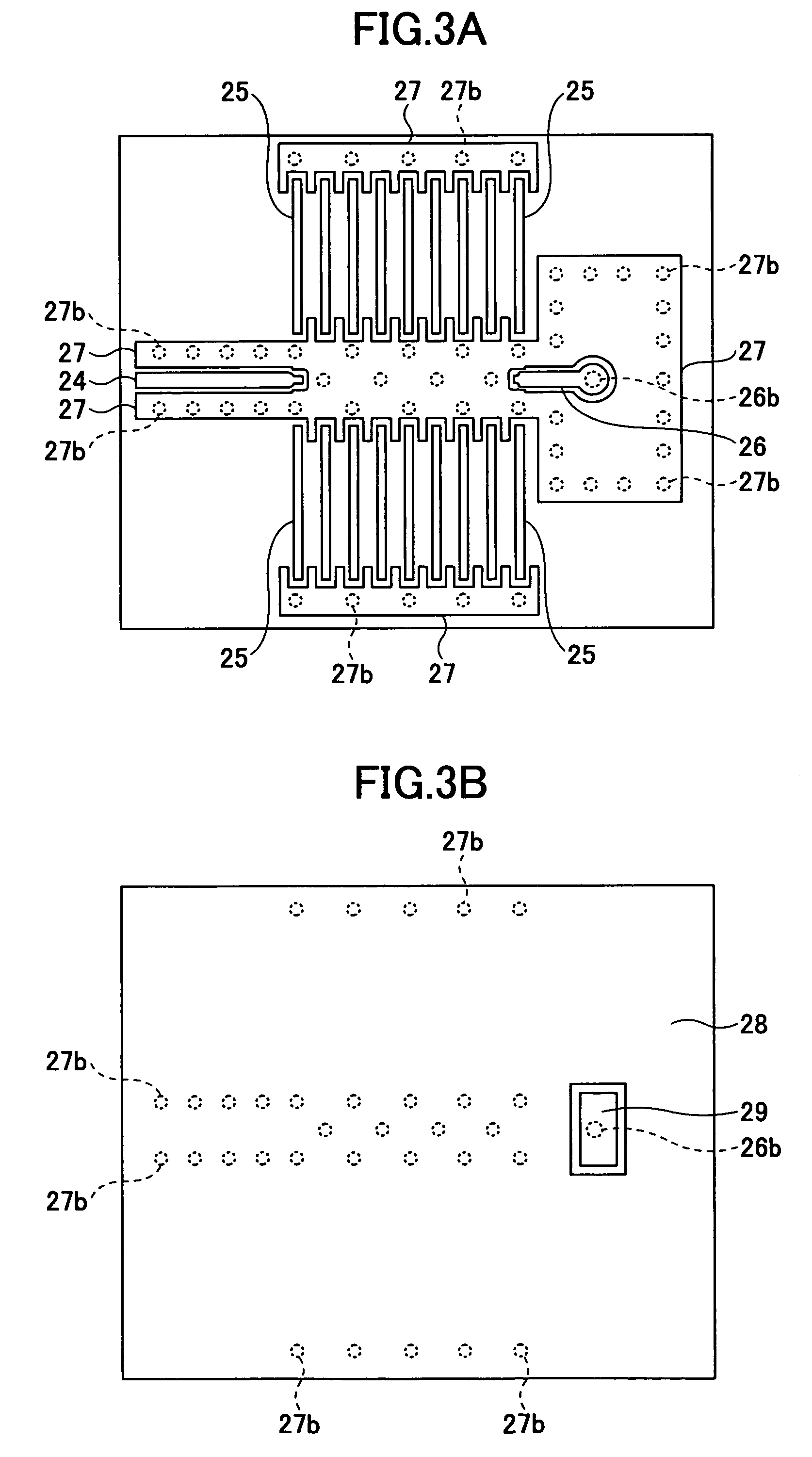Radio-frequency module for communication
a radio frequency module and communication technology, applied in the field of radio frequency modules for communication, can solve the problems of high production cost, inability to lower the module production cost, and delay in the actual use of electronic devices that utilize electric waves in milliwave bands, so as to reduce material cost and cost, improve the accuracy of processing through holes, and reduce the effect of material cost and cos
- Summary
- Abstract
- Description
- Claims
- Application Information
AI Technical Summary
Benefits of technology
Problems solved by technology
Method used
Image
Examples
first embodiment
[0028]FIG. 2 is a cross-sectional view of a radio-frequency module for communication in accordance with a first embodiment of the present invention.
[0029]As shown in FIG. 2, the communication radio-frequency module 10 of this embodiment includes: a supporting body 11 in which a waveguide 15 is formed; a wiring board 21 that is fixed onto the supporting body 11; a semiconductor device 31 that is flip-chip mounted on the wiring board 21; a cap 32 that covers the semiconductor device 31; and an antenna element 41 that is fixed to the bottom surface of the supporting body 11.
[0030]The semiconductor device 31 may be formed with an MMIC (monolithic microwave IC), for example. Although not shown, the MMIC includes: a semiconductor substrate that has an active element such as an FET (field-effect transistor) and is made of GaAs or Si; a resistive element that is formed on the insulating layer on the surface of the semiconductor substrate; and a circuit pattern to which a passive element suc...
second embodiment
[0068]FIG. 7 is a schematic cross-sectional view of a communication radio-frequency module in accordance with a second embodiment of the present invention. In this drawing, the same components as those of the first embodiment are denoted by the same reference numerals as those in the first embodiment, and explanation of them is omitted in the following description.
[0069]As shown in FIG. 7, the communication radio-frequency module 60 is the same as the communication radio-frequency module 10 in accordance with the first embodiment, except that a ceramic film 62 is interposed between the supporting body core member 12 and the conductive film 13 on the upper surface side of a supporting body 61 (on the side of the wiring board 21).
[0070]The ceramic film 62 may be made of alumina, crystallize glass, aluminum nitride of 500 μm in thickness, or a mixed material of those materials, for example. The ceramic film 62 is fixed to the supporting body core member 12 with an adhesive agent. The f...
third embodiment
[0073]FIG. 8A is a schematic perspective view of a communication radio-frequency module in accordance with a third embodiment of the present invention. FIG. 8B is a cross-sectional view of the communication radio-frequency module. In FIGS. 8A and 8B, the components equivalent to the above described components are denoted by the same reference numerals as those denoting the foregoing components, and explanation of them is omitted in the following description.
[0074]As shown in FIGS. 8A and 8B, the communication radio-frequency module 70 of this embodiment includes a semiconductor device 71 to which a voltage controlled oscillator (VCO) is mounted, a transmission semiconductor device 72, reception semiconductor devices 73-1 through 73-8, and antenna elements 41 that are connected to the transmission semiconductor device 72 and the reception semiconductor devices 73-1 through 73-8. The semiconductor devices 71, 72, and 73-1 through 73-8 are connected to one another with coplanar transmi...
PUM
 Login to View More
Login to View More Abstract
Description
Claims
Application Information
 Login to View More
Login to View More - R&D
- Intellectual Property
- Life Sciences
- Materials
- Tech Scout
- Unparalleled Data Quality
- Higher Quality Content
- 60% Fewer Hallucinations
Browse by: Latest US Patents, China's latest patents, Technical Efficacy Thesaurus, Application Domain, Technology Topic, Popular Technical Reports.
© 2025 PatSnap. All rights reserved.Legal|Privacy policy|Modern Slavery Act Transparency Statement|Sitemap|About US| Contact US: help@patsnap.com



